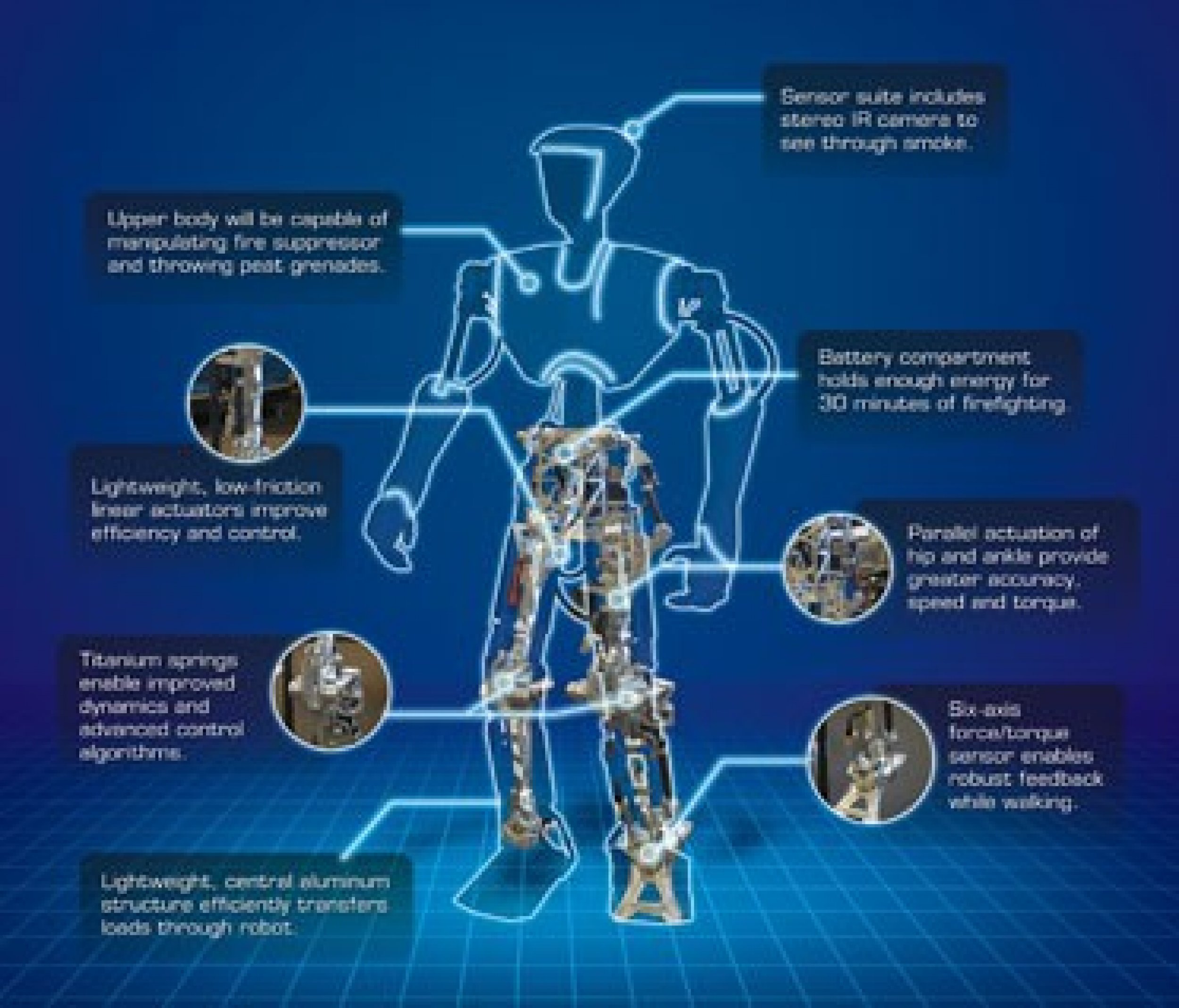Grenade-Throwing Robot Being Developed By The Navy To Fight Fires Aboard Ships [PHOTOS]
The U.S. Navy is dedicating researchers and engineers to creating the next generation of machines: the grenade throwing robot.
The U.S. Naval Research Laboratory is working tirelessly to develop a humanoid-type robot to be used in battle. The two-legged, battery powered metal soldier will reportedly be used to fight fires on military boats.
The Shipboard Autonomous Firefighting Robot, also called SAFFiIR, will be armed with a camera, both digital and infrared, and a gas sensor that can extinguish fires in cramped quarters, saving lives and equipment. But as an added bonus, it will also be designed with the capability of manipulating fire suppressors and throwing propelled extinguishing agent technology (PEAT) grenades, according to the NRL.
The humanoid-robot will be able to reportedly be able to act like a Navy crewman and even interact with sailors on board and possibly other robots.
Another key element of the SAFFiR development is to allow damage control personnel and the robot to work cohesively as a team, said the NRL in a statement. Algorithms are being developed to allow autonomous mobility and decision making by the robot as a team member.
SAFFiR will have the ability to understand hand signals and gestures, as well as voice commands, in a firefighting situation.
To enable natural interaction with a human team leader, the robot will have multimodal interfaces that will enable the robot to track the focus of attention of the human team leader, as well as to allow the robot to understand and respond to gestures, such as pointing and hand signals, said NRL in a statement. Where appropriate, natural language may also be incorporated, as well as other modes of communication and supervision.
However, so far, the robot will only have enough battery life for 30 minutes. Still, researchers will most likely develop ways to increase the battery life if the project is successful.
Researchers from Virginia Tech and the University of Pennsylvania will be assisting the NRL's Navy Technology Center for Safety and Survivability on this project. NRL says that in approximately 18 months, SAFFiR will be able to be tested out in the field. Researchers expect their design to be able to navigate through smoke and flames while being able to squeeze in between the cramped areas of ships, even during harsh conditions at sea.


© Copyright IBTimes 2024. All rights reserved.





















